Digital Eye Strain: What Is It and How to Protect Your Eyes
Digital eye strain, also known as computer vision syndrome, is increasingly common in our screen-heavy world. Whether you’re working from home, scrolling on your phone, or bingeing shows, long hours of screen time can lead to real discomfort and long-term issues if left unchecked.
At Not Another Eye Store, we’ve seen a rise in patients, especially remote workers and students. They are coming in with symptoms they didn’t know were related to their screens.

What Causes Digital Eye Strain?
Digital eye strain happens when your eyes are forced to focus at a near distance for too long, especially on bright screens. Common causes include:
-
Prolonged focus on phones, laptops, and tablets
-
Infrequent blinking while staring at screens
-
Screen glare and poor ambient lighting
-
Blue light emitted from digital devices
You may notice symptoms like dry eyes, blurry vision, headaches, or neck and shoulder tension. These are warning signs that your eyes are overworked.
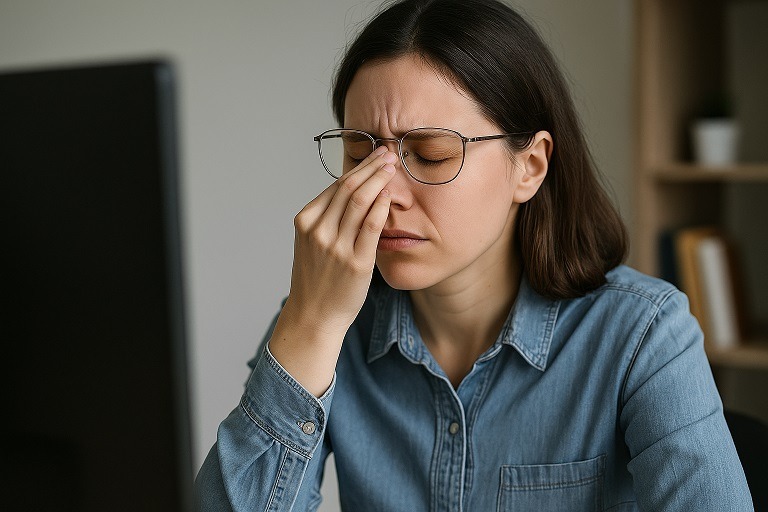
Common Symptoms to Watch For
Digital eye strain doesn’t feel the same for everyone, but common symptoms include:
-
Blurred or double vision
-
Eye dryness or irritation
-
Headaches, especially near the temples
-
Neck or shoulder pain from posture strain
-
Difficulty concentrating or focusing after screen use
If you’re experiencing any of these symptoms regularly, it may be time to adjust your screen habits or your lenses. At Not Another Eye Store, we often see first-time clients who think their eyes are just “tired” when in reality, they need more customized lens solutions for their screen use.
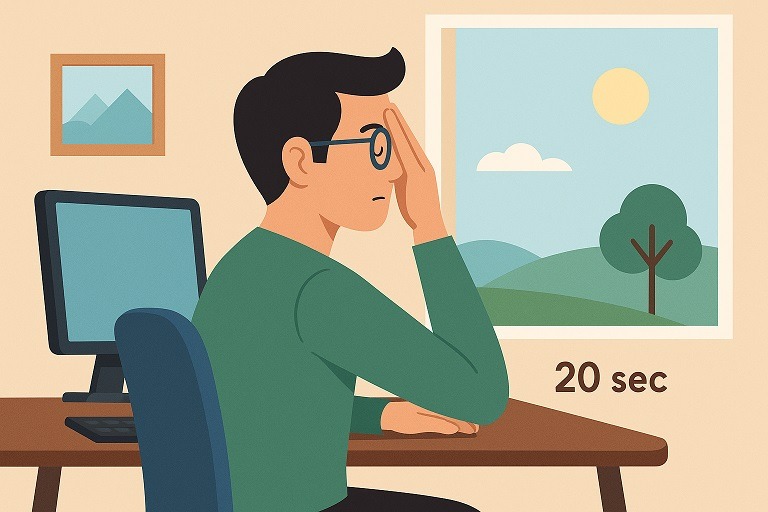
How to Prevent and Reduce Eye Strain
1. Follow the 20-20-20 Rule
Every 20 minutes, look 20 feet away for 20 seconds. This simple habit gives your eyes a rest and helps reduce fatigue. We’ve even printed this rule on reminder cards we hand out in-store.
2. Adjust Your Lighting and Screen Setup
Reduce glare by using indirect lighting. Set your screen brightness to match your surroundings. Avoid sitting with bright windows directly behind or in front of you.
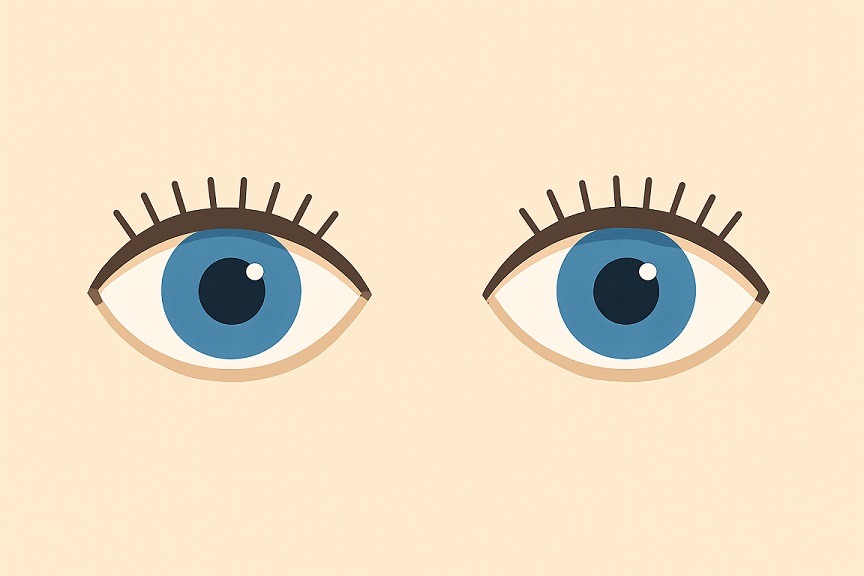
3. Blink More Often
Screen use reduces blinking, which leads to dryness. Consciously blink more or use artificial tears to help.
4. Use Blue Light Filtering Lenses
Adding a blue light coating to your glasses can reduce the effects of screen glare and help reduce strain. This coating is available on all types of prescription lenses, including:
You can also replace your lenses with a blue light filter if your current frames still fit well. We’ve done this for countless clients who love their existing frames but want better visual comfort.
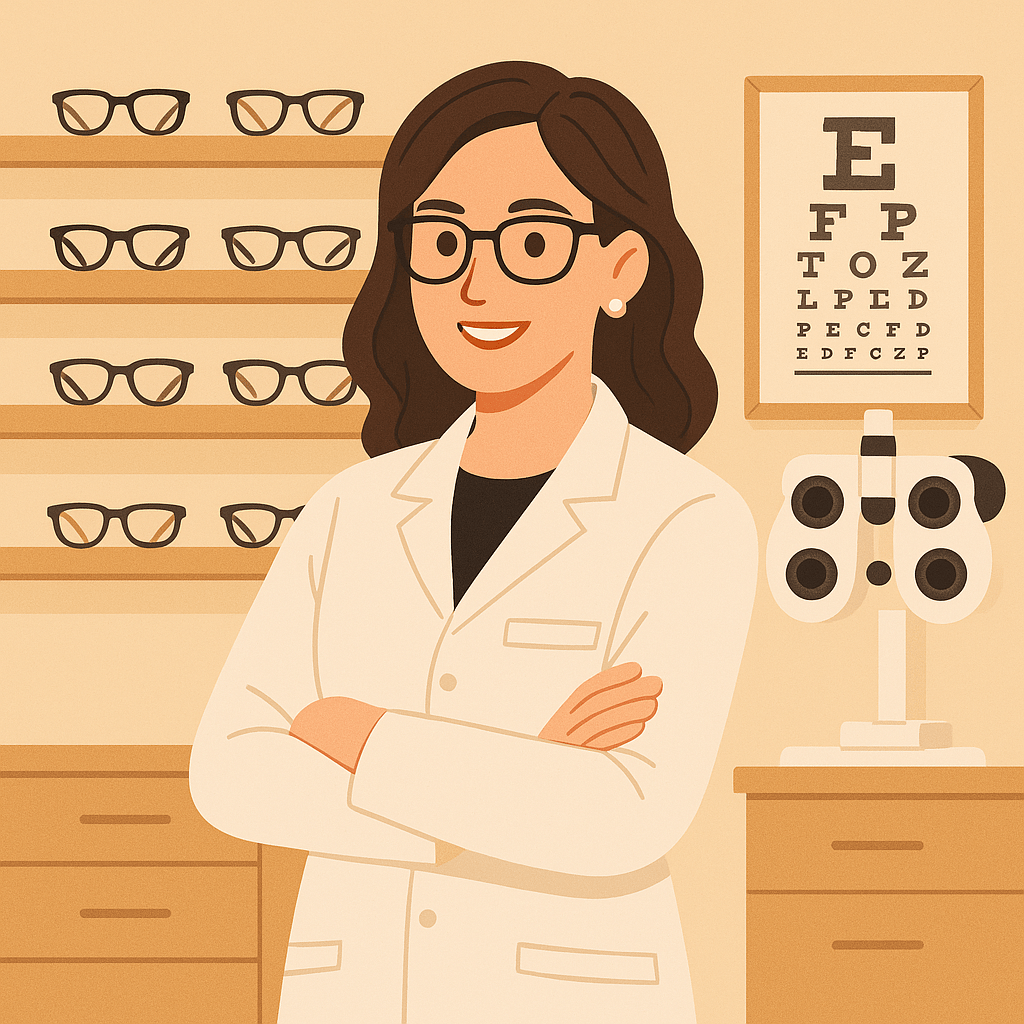
When to See an Optician or Optometrists
If you’ve adjusted your screen setup, followed the 20-20-20 rule, and tried blue light filters but still experience symptoms, it’s time to seek professional help.
As a licensed optician at Not Another Eye Store, I can assess your current eyewear. Check if your blue light coating is effective, verify lens measurements, and recommend more suitable lenses if necessary.
An optometrist can perform a comprehensive eye health exam to detect underlying issues, such as uncorrected vision, muscle imbalances, or dry eye syndrome. They may also update your prescription and offer medical advice on long-term eye care.
We regularly work with patients who assume their discomfort is just normal when, in reality, a quick consultation leads to long-lasting relief.
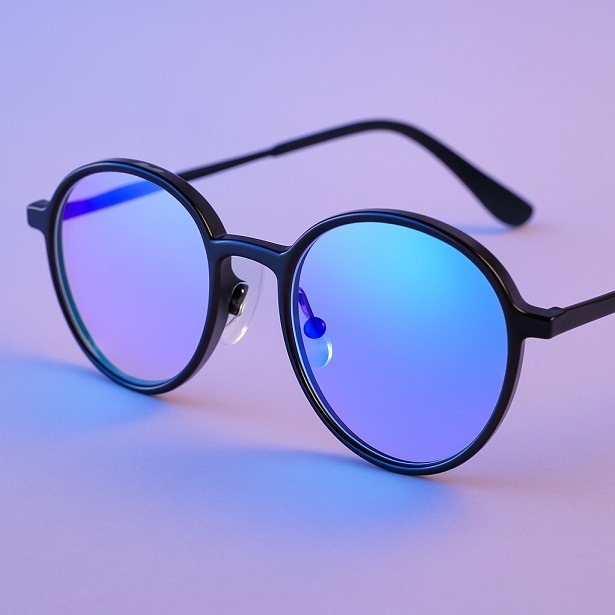
Preventing Digital Eye Strain with the Right Lenses
Digital eye strain is preventable. A few simple changes, like taking breaks, using blue light filters, and adjusting your lighting can make a big difference.
At Not Another Eye Store, we offer coatings and lens upgrades for all types of prescriptions, whether you’re replacing old lenses or ordering new frames. We’re here to break down every option in plain language—no industry jargon, no pressure.
Visit us to see how we can help or contact us to speak with a licensed optician.
FAQ - Digital Eye Strain
How do you fix digital eye strain?
Make blinking a habit during screen time—your eyes need moisture. Take regular breaks by following the 20-20-20 rule: every 20 minutes, look 20 feet away for 20 seconds. This simple routine helps prevent dryness, relaxes your eye muscles, and supports long-term eye comfort—something we often recommend to clients at Not Another Eye Store who spend hours at a desk.
What does a digital eye strain feel like?
Digital eye strain (DES) is a group of vision and eye-related symptoms that occur from extended screen use. Common signs include dry eyes, itchiness, blurry vision, a gritty feeling, and headaches. As a licensed optician, I often see these symptoms in people who spend long hours on digital devices without the right lenses or eye care habits.
Is digital eyestrain permanent?
Many symptoms of digital eye strain—like eye fatigue or dryness—are temporary and improve after screen use ends. However, some people may still experience lingering issues, such as blurry distance vision or difficulty refocusing, even after stepping away from their device. This can be a sign that their eyes aren’t adjusting properly and may need further evaluation.
Do I need glasses if I have digital eye strain?
If you spend long hours on a computer, you may benefit from glasses designed specifically for screen use. These are called computer glasses, and they’re tailored to focus at intermediate distances—typically 20 to 26 inches from your eyes. They can help reduce strain, improve clarity, and support better posture by allowing you to work without leaning forward or squinting. A proper prescription and lens type can make a significant difference in long-term eye comfort.
Can I reverse digital eye strain?
Yes—many symptoms of digital eye strain can improve with lifestyle changes. Reducing screen time, taking regular breaks, and using the right lenses often helps symptoms fade. However, if you use digital devices daily, the strain may return or worsen without proper management. Long-term relief requires a combination of good screen habits, regular eye exams, and eyewear designed for screen use.